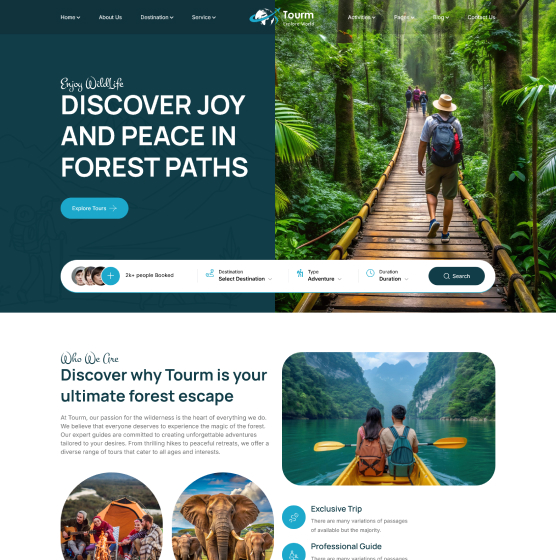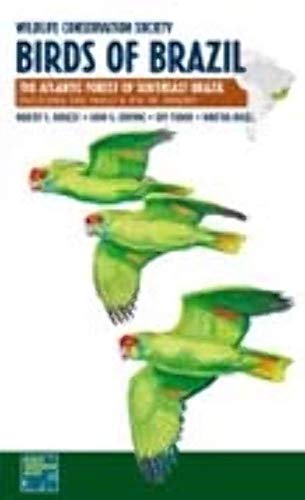Brazil is home to some of the world’s most diverse wildlife. From the Amazon rainforest to the Pantanal wetlands, the variety is astounding.
In this guide, we’ll explore Brazil’s unique fauna. You’ll discover creatures from the smallest insects to the majestic jaguar. Brazil’s landscapes are teeming with life, offering endless opportunities for wildlife enthusiasts. Whether you’re an avid birdwatcher, a reptile lover, or fascinated by mammals, Brazil has something for everyone.
This guide will help you understand the habitats and behaviors of Brazil’s wildlife. Get ready to delve into the wonders of Brazil’s natural world and learn what makes it so special. Join us on this journey through one of the planet’s most vibrant ecosystems.
Amazon Rainforest Treasures
The jaguar is a big cat. It is the largest in the Americas. Jaguars have strong jaws and sharp teeth. They can bite through bones. Their fur is beautiful. It has spots that look like roses.
Jaguars are great swimmers. They love water. They often hunt near rivers. Fish, turtles, and small animals are their food. Sometimes, they climb trees to watch for prey.
The harpy eagle is one of the world’s largest eagles. It has powerful legs and sharp talons. Its wings are short and broad. This helps it fly through trees. They live in tall trees in the rainforest.
Harpy eagles hunt monkeys and sloths. They can carry heavy prey. These eagles have keen eyesight. They can see prey from far away. Their feathers are gray and white.

Credit: www.facebook.com
Pantanal Wonders
The Capybara is the world’s largest rodent. Capybaras live in groups near water. They are great swimmers. They can hold their breath for five minutes. These animals eat plants. They are gentle and social. In the Pantanal, you can see many Capybaras.
The Hyacinth Macaw is a big, blue parrot. It has a bright yellow ring around its eyes. This bird loves to eat nuts. Hyacinth Macaws are very smart. They can use tools to get food. These parrots are also very loud. Their calls can be heard from far away. Spotting a Hyacinth Macaw is a real treat.
Atlantic Forest Gems
The Golden Lion Tamarin is a small monkey. It has bright orange fur. This monkey lives in the Atlantic Forest. Their habitat is shrinking. They are now endangered. These tamarins eat fruits, insects, and small lizards. Conservation efforts are helping. Zoos are involved in breeding programs. This helps increase their population.
The Maned Sloth lives in Brazil’s Atlantic Forest. It is known for its long, dark mane. This sloth is slow and gentle. It spends most time in trees. Eating leaves is its main diet. The Maned Sloth is unique. It has fewer ribs than other sloths. This species is also endangered. Protecting its habitat is crucial.

Credit: www.mullenbooks.com
Cerrado Secrets
The Giant Anteater is a unique creature. It has a long snout and a sticky tongue. This helps them catch ants and termites. They can eat thousands of insects in one day. Their large claws help them dig into ant hills. They have a bushy tail, which they use for warmth. They are solitary animals. They often live alone. Their sense of smell is very strong. This helps them find food.
The Brazilian Merganser is a rare bird. It lives near clean rivers and streams. Its feathers are dark with white patches. It feeds on fish and small aquatic animals. This bird is very skilled at diving. It can swim underwater to catch its prey. They are very shy and hard to spot. They are also an endangered species. Protecting their habitat is very important for their survival.
Caatinga Curiosities
Lear’s Macaw is a rare bird. It lives in the Caatinga area of Brazil. This bird has beautiful blue feathers. It also has a strong beak. Lear’s Macaw eats fruits and seeds. Palm nuts are their favorite food. They are very smart birds. They can even mimic sounds. Sadly, they are endangered. People are trying to save them. They need our help.
The Caatinga Antwren is a small bird. It is also found in the Caatinga region. This bird has brown and white feathers. It moves quickly through bushes. The Caatinga Antwren eats insects. It loves to catch bugs on leaves. This bird is also in danger. Protecting their home is very important. We must keep their habitat safe.

Credit: www.facebook.com
Marine Marvels
The Pink River Dolphin lives in the Amazon River. Its pink color makes it unique. This dolphin is smart and friendly. It uses its long beak to find food. Small fish and crabs are its favorite. During the wet season, it swims in flooded areas. This helps it find more food. People love to see this amazing dolphin.
The Green Sea Turtle swims in Brazil’s coastal waters. It has a greenish shell. This turtle can live up to 80 years. It eats seagrass and algae. It helps keep the ocean healthy. Female turtles lay eggs on beaches. Baby turtles face many dangers. Only a few survive. These turtles are important to the ocean’s life.
Birdwatcher’s Paradise
The Toco Toucan has a huge, colorful beak. It is the largest toucan in Brazil. These birds are easy to spot. Their bright beaks make them stand out. They eat fruits, insects, and small lizards. Toco Toucans live in tropical forests. They are friendly and curious birds. Watching them is a joy.
The Scarlet Ibis is a bright red bird. It lives in mangroves and wetlands. These birds eat crabs, shrimp, and insects. Their red color comes from their diet. They are graceful in flight. Seeing a flock of Scarlet Ibis is breathtaking. They are one of nature’s wonders.
Conservation Efforts
Brazil’s wildlife faces many threats. Conservation efforts protect diverse species and their habitats. Discover these efforts in our guide.
Protected Areas
Brazil has many protected areas to help wildlife. These areas are safe havens for animals and plants. National parks, reserves, and sanctuaries help to keep nature safe. Some areas are very big. Others are smaller. Each area is important. They help different types of wildlife. Protected areas help to stop deforestation. They also help to stop illegal hunting. Many people work hard to keep these areas safe. This is good for wildlife.
Endangered Species
Brazil has many endangered species. These animals need special care. The jaguar and golden lion tamarin are two examples. Conservation groups work to help them. They make plans to save these animals. They also teach people about them. Protecting habitats is key. Without it, animals cannot live well. Helping endangered species is a big job. Many people work together. This is important for Brazil’s wildlife.
Frequently Asked Questions
Where Is The Best Place To See Wildlife In Brazil?
The Pantanal is the best place to see wildlife in Brazil. It offers diverse species, including jaguars, capybaras, and exotic birds.
What Animal Is Only Found In Brazil?
The golden lion tamarin is only found in Brazil. This small primate lives in the Atlantic coastal rainforests.
What Is The Biggest Predator In Brazil?
The jaguar is the biggest predator in Brazil. It dominates the food chain and hunts various animals.
What Is Brazil’s Iconic Animal?
Brazil’s iconic animal is the jaguar. It symbolizes the country’s rich biodiversity and natural beauty. Jaguars are found in the Amazon rainforest and Pantanal wetlands.
Conclusion
Exploring Brazil’s wildlife is a thrilling adventure. Its biodiversity is unmatched. From the Amazon rainforest to the Pantanal wetlands, nature lovers will be amazed. You will encounter unique animals like jaguars, toucans, and pink dolphins. Remember to respect their natural habitat.
Bring a camera to capture unforgettable moments. Visiting Brazil offers a chance to connect with nature. Plan your trip wisely and enjoy the wonders of Brazil’s wildlife. Happy exploring!











